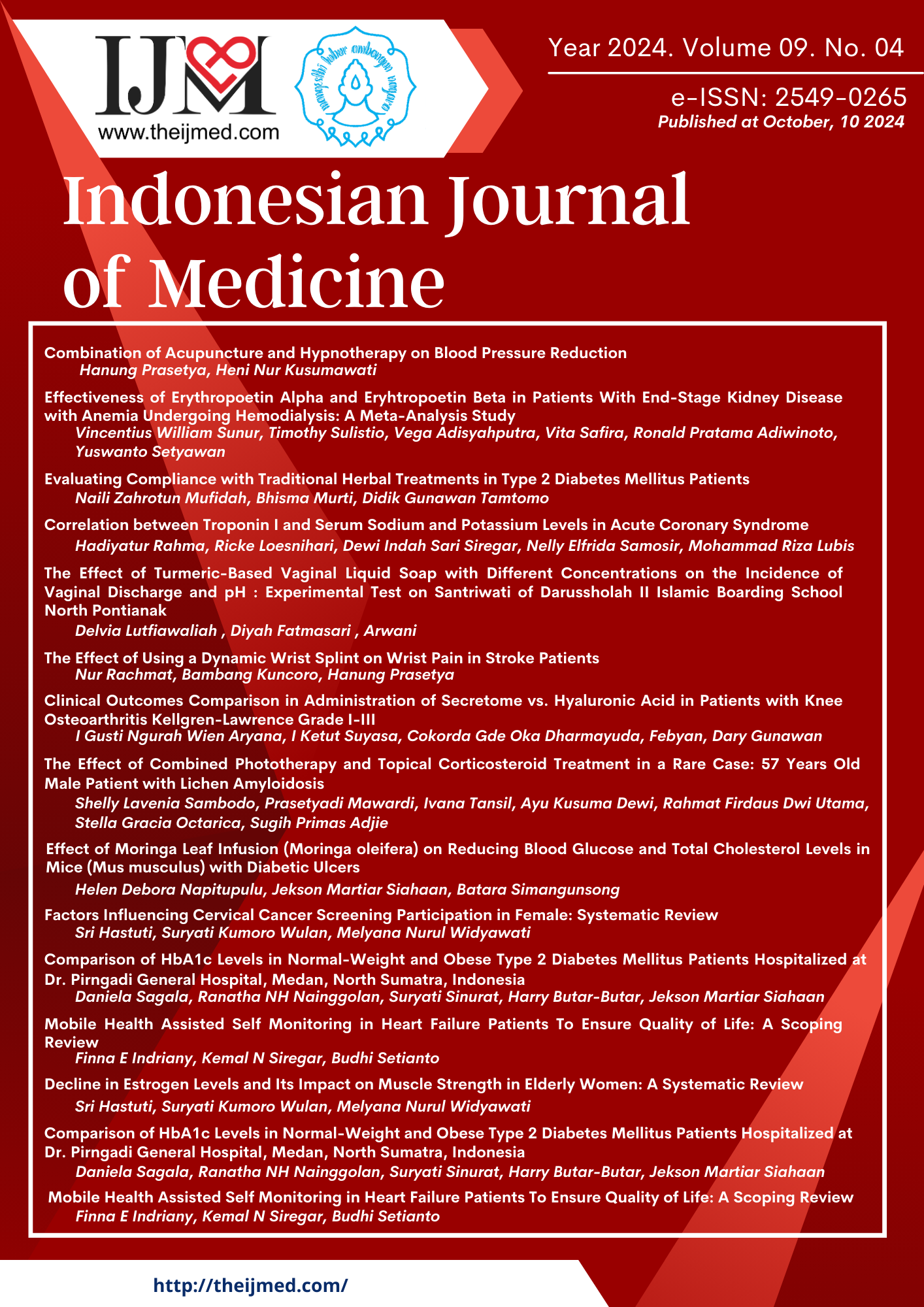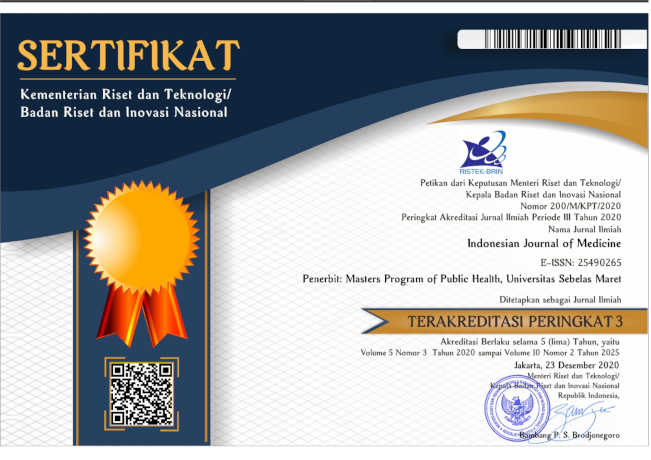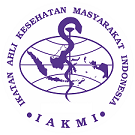Comparison of the Effects of Zig-Zag Run and Shuttle Run Exercises on Agility in Futsal Players
DOI:
https://doi.org/10.26911/theijmed.2024.9.4.828Abstract
Background: Futsal players really need agility so that they can improve their performance and get maximum results as well as improve the body's physiological systems and functions. Physiotherapy plays a role in efforts to improve player achievement by optimizing physical capacity and functional abilities so that maximum achievement is achieved. Agility exercises that can be used to improve agility are obstacle runs, zig-zag runs, and shuttle runs. The purpose of this study is to find out which has a greater effect between the addition of zig-zag run and shuttle run exercises on the agility of futsal players.
Subjects and method: This was an experimental study to compare the effect of zig-zag run and shuttle run on agility. 30 futsal players aged 18-23 years were divided into two groups, i.e. zig-zag run and shuttle run, randomly. The dependent variable was agility. The independent variables were zig-zag run and shuttle run. Difference of agility score before and after intervention between groups was tested using independent t-test.
Results: There was no difference of agility level between zig-zag run (Mean= 10.06; SD= 0.49) and shuttle run (Mean= 10.02; SD= 0.74) groups before intervention, p= 0.315. After intervention, there was a slight difference of agility level between zig-zag run (Mean= 9.77; SD= 0.43) and shuttle run (Mean= 9.73; SD= 0.74) groups, and it was marginally significant (p= 0.052).
Conclusion: After intervention, there is a slight difference of agility level between zig-zag run and shuttle run groups, and it is marginally significant.
Keywords:
agility, zig-zag run , shuttle run exercisesReferences
Alimuddin A, Yudiramawan Y, Komaini A, Gemaini A, Haris F (2024). The effectiveness of shuttle-run and zigzag run training on the agility of football players. Sports Medicine Curiosity Journal. 2: 69–75. doi:10.-15294/smcj.v2i2.77158
Giriwijoyo S (2012). Ilmu faal olahraga (fisiologi olahraga): The function of the human body in sports for health and achievement (fungsi tubuh ma-nusia pada olahraga untuk kesehatan dan prestasi). Bandung: Remaja Ros-dakarya.
Gunawan G (2018). The relationship between leg power and agility with dribbling skills in futsal games (hu-bungan power tungkai dan kelincahan dengan keterampilan menggiring bola pada permainan futsal). Jurnal Speed (Sport, Physical Education, Empowerment). 1:30–39. https://garuda.kem-dikbud.go.id/documents/detail/1098074.
Guyton AC, H.JE (2014). Textbook of medical physiology (buku ajar fisiologi kedokteran), 1st ed. Jakarta: Penerbit Buku Kedokteran EGC.
Jonathan (2005). 101 performance evalua-tion tests. in brian mackenzie: zig-zag run (101 performance evaluation tests. dalam brian mackenzie: zig-zag run). Electric Word plc, London. Hal: 59.
Nala (2011). Principles of physical training of sports (prinsip pelatihan fisik olahraga). Denpasar: Udayana University Press.
Nosa VTA, Sulaiman I, Nurdin F, Praniata AR (2019). Futsal shooting learning model for high school students (model pembelajaran shooting futsal untuk siswa sma). Jurnal Pendi-dikan Olahraga. 8: 27. doi:10.-31571/jpo.v8i1.1218
Pauole K, Madole K, Garhammer J, Laco-urse M, Rozenek R (2000). Relia-bility and validity of the t-test as a measure of agility, leg power, and leg speed in college-aged men and women. J Strength Cond Res 14. 443–450. doi: 10.1519/00124-278-200011000-00012.
Ruslan SM, Faturrahman S (2021). Latihan lari zig-zag untuk kemampuan menggiring sepak bola zig-zag (Running Exercises for Ball Drill Skills). Jambura J Sports Coaching. 3: 33–38. doi:10.37311/jjsc.v3i1.9644.
Sukadiyanto (2011). Introduction to phy-sical training theory and methodology (pengantar teori dan metodologi melatih fisik). Yogyakarta: CV Lubuk Agung.
Suwo R, (2020). Erratum: korelasi antara kelincahan dengan topspin tenis meja atlet kota kendari (erratum: correlation between agility and top spin table tennis athletes in kendari city). JUARA: Jurnal Olahraga. doi:10.33222/juara.v5i2.914.
Syahara S (2011). Physical-motor growth & development (pertumbuhan & per-kembangan fisik-motorik). Padang: Fakultas Ilmu Keolah-ragaan. Uni-versitas Negeri Padang.
Syahputra MA, Hasibuan S, Novita N (2021). The effect of shuttle run and zig zag run exercises and confidence on passing productivity on tanjung-balai FC Pumata futsal players. J Physic Educ Health Recreation. 5: 173. doi:10.24114/pjkr.v5i2.27572
Tofikin, Sinurat R (2020). Zig-zag run: a method of practicing the agility of the pencak silat sickle kick (zig-zag run: metode latihan kelincahan tendangan sabit pencak silat). Journal Sport Area 5. 177–185. doi:10.25299/sportarea.-2020.vol5(2).5333
Widiastuti (2011). Exercise Tests and Mea-surements (Tes dan Pengukuran Olahraga). Jakarta: PT Bumi Timur Jaya.












